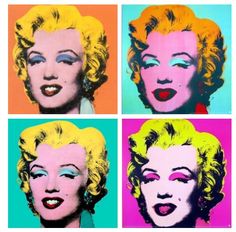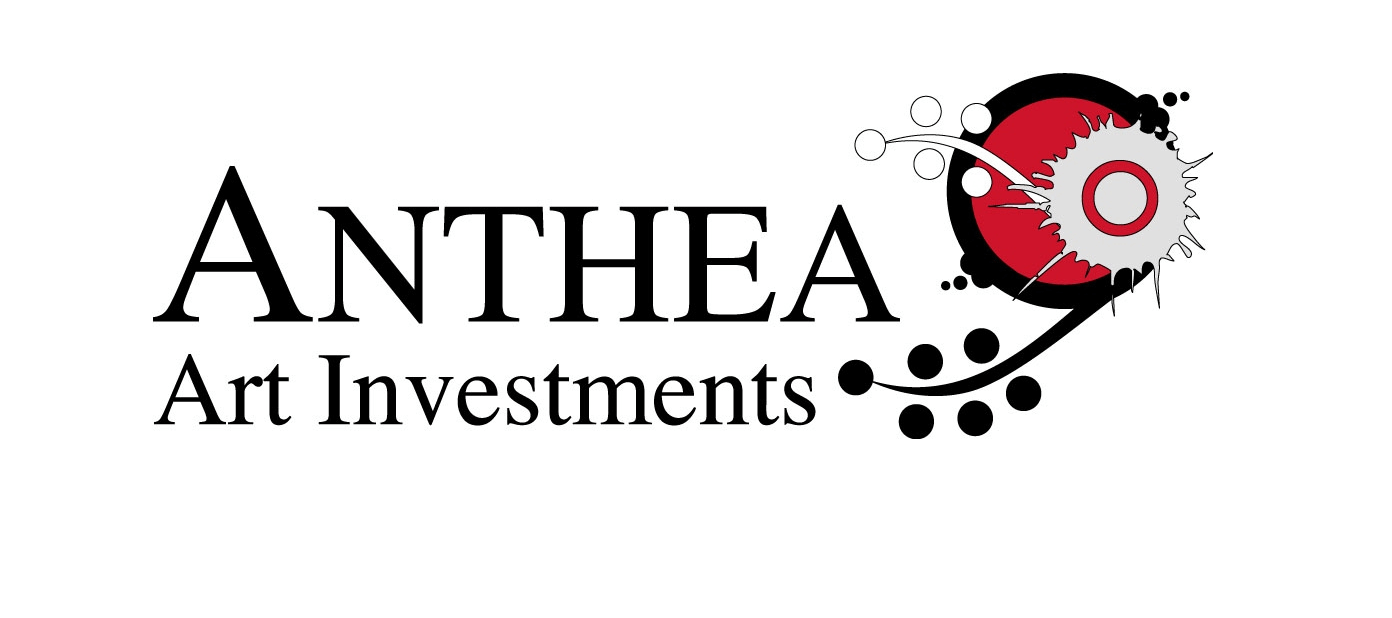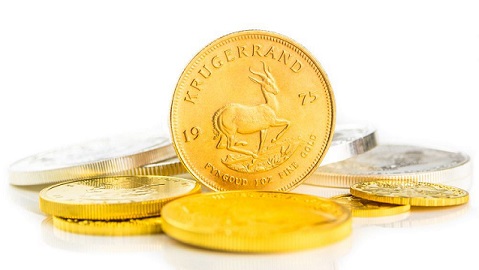Investing in Post-War & Contemporary art
Massimiliano Subba is the Chief Executive Officer of Anthea Art Investments AG, an investment advisory boutique founded in Zug, Switzerland in 2008 and specialised in investing in Post-War & Contemporary Art.
He graciously accepted to discuss with us the art investment world. Art investment is a fascinating topic because looking through the eyes of an expert is a rare opportunity. Mr Subba passion and expertise can be felt throughout the interview, and I thank him for sharing his insights on the fascinating universe of investing in art.
Why is art valuable? What are investors or art lovers getting in return of the money they pay for art?
There are many factors which influence the value of an art work. Among them the most relevant are:
- The artist prestige;
- The uniqueness of the art work;
- The emotional connection between the collector and his artworks.
The Artist’s prestige is a key component for the value of his artworks.
Several artists’ attributes determine the price of his or her art. These include career achievements, public and collectors’ recognition, prizes and awards, exhibitions of the artist works at well-known museums and galleries, a steady and regular auction track record and furthermore for the artist and its works to be contextualised within a seminal art historical movement or time period.
Whether an artist is dead or alive, has an impact on the price of his or her art. Similarly, if an artist is over or under producing, creates an increase or decrease in the supply of art works as such influencing their value.
If an artists is still alive and actively producing, new works will be available on the market as such new supply will be ensured to satisfy collectors desire to own his/her works. Alternatively, if new works are no longer available as such acquisitions of the artist works can only target existing pieces already in private hands this will create competition among buyers which will command higher prices.
Young emerging artists, who will be producing more in the future, can positively influence their public, achieve greater recognition and win collectors’ awareness. This means that good works by young artists can be purchased at more affordable prices if compared to works by their more established peers and grow in value while the artist builds his brand with the right attributes and seduces the market.
The Uniqueness of a piece of art makes it more valuable.
Art ownership creates prestige and exclusivity because of the uniqueness of the artwork. This is simple supply and demand economics. This is the same mechanism that gives value to scarce goods such as gold, truffles and bitcoin. They are available on the market in limited quantity and thus ownership command value.
Each art work is one and only and to this extent collectors are willing to pay very expensive prices in order to ensure themselves ownership of unique and immensely prestigious works. This is confirmed by a number of incredible record prices recently set at auction for example
- Modigliani painting sells to Chinese billionaire for record-breaking $170m
- Alberto Giacometti sculpture ‘Pointing Man’ sells for record-breaking $141m as National Portrait Gallery announces his first ever solo exhibition
Emotional connection is a unique and deep link between art and those who love it.
Art is a window through someone feelings, memories and emotions. Art can be a container of specific points in someone’s life, memories of successful business achievements, special moments in the personal or family life, it can become a celebrative monument. Art creates a bridge between the present and the past. A past when loved ones were still alive, when the youth within was still burning, when love and passion vibrated throughout someone’s body. This is what defines art as an “emotional asset” as such its price or value can be a factor of the strength of the connection between art and priceless moments of his owner life.
This emotional connection can occur on a greater scale when art becomes the icon of an era. Art can capture a snapshot of the zeitgeist and matures into an anthem to an event. This can capture the attention of many and thus demand and price both go upwards.

A classic example of this phenomena is Andy Warhol’s Portrait of Marylyn Monroe
Which symbolises the cultural heritage of the 50s and 60s.
What are the dynamics of Art Investing? Why do people invest in art?
There are three primary reasons for investing in art:
- Wealth preservation
- Value appreciation
- The emotional return.
Art investing can preserve wealth as artworks tend to appreciate in value in line with inflation.
In general, art will maintain the same inflation-adjusted value through the years. Furthermore, art can be very easily transported, and it is not physically linked to any market as such its value is not necessarily anchored to any currency or domestic market downturn.
Art can also be a speculative investment in the sense of buying art at auctions or from galleries at convenient prices to then sell it in the very short term sometimes yielding a profit.
Nevertheless, those kind of buyers, known as art flippers, are not very much appreciated in the art market as they undermine prices’ stability by adding volatility to the market. More wisely, art collectors buy art with a longer investment horizon (5 years plus) very often achieving substantial appreciation in value.
A shorter investment time horizon means investors have to take an investment view on artists which are already on an upward trend and close to make an upturn in their career. Instead, investors with a longer time horizon aim to achieve substantial appreciation both through consolidation of the artist career and public recognition and the artwork uniqueness.
In order to come up with a well-defined investment strategy, the quality of pre-acquisition due diligence is of the essence. While it is very challenging to predict the future value of an artwork, making sure that at the time of purchase the requested price is in line with the market and properly reflect the artist’s career achievement and quality of the art work is the right way to ensure the value of the acquisition and expect future appreciation. To this extent, taking advantage of the advice of experienced art professionals can substantially help in identifying talented artists, good quality artworks and positive trends.
Art potentially provides more than a financial return. It also creates an emotional return. Tell me more about this?
Clearly there is a strong emotional component in both loving and owing art. People have both positive and negative emotions, and art can be a doorway to both. Art has the power of creating emotional whirlwinds within human beings. This emotional return is unique to each individual and surely leads to desire of possession.
What are the current trends shaping the art market?
Art is constantly evolving in terms of artists, styles, trends, media and collectors. Specifically, with regards to the market we are currently witnessing a major expansion in terms of collector’s base. New art buyers from Asia and the Middle East are becoming key players in the art market by influencing both taste and market valuations.
To this extent median prices for sold artworks is increasing compared to some years ago as the most sought after pieces are being fought over by ultra-high net worth art collectors, who are willing to pay what is takes to ensure ownership of the most exclusive works.
What are some of the risks that investors need to be aware of before buying art?
The main risk when purchasing art is not carrying the necessarily due diligence and/or not using the advice of proper experts. Buying a piece of art for investment purpose is a transaction that needs to be analysed thoroughly. Contextually within the pre-acquisition due diligence, an exit strategy analysis needs to be considered and formulated.
An art investor should find answers to questions like:
- What are the factors which will trigger an appreciation of the artwork?
- Who is going to be the targeted buyer of the artwork at the time of sell?
- How much will this buyer afford to pay?
- Will the trends of today still be consistent in five/ten years’ time or at the time of sale?
- Will the interest by future collectors change for a particular historical movement or time period?
Buying artworks to extract value appreciation is somehow like reading the future!
Frauds and fakes in the art world can also be an issue, but making a proper due diligence further to use reliable professionals and established purchase channels can reduce the risk substantially.
What is the role of Galleries in Art investing?
Galleries play a key role in the art market as they facilitate the match between artists and collectors. Almost 50% of the art markets transactions take place through galleries. These sometimes also act as advisors of art collections.
Nevertheless, buyers looking to buy art for investment purposes need to carefully investigate the market. Artists and artwork proposed by a gallery could be either truly rising stars or just having a positive “momentum” which then fades away in the long term. Expert advice is key to avoid disappointment.
Can you tell us more about the services that your company offers?
Anthea Art Investments (www.anthea-art.com) offers an independent, tailor-made, art advisory service to individuals aiming to either build their own art collection or merely buy artworks for investment purpose. Furthermore, we offer a range of investment funds which clear and distinctive features provide a thorough rationale to include Art as an alternative investment within a financial investment portfolio representing thus the most effective tool to achieve a cutting-edge diversification strategy.
Our client base for art advisory services ranges from young collectors aiming to buy works by up and coming emerging artists which price usually start from a few tenths of thousand Euros to the most established collectors which art they are looking to buy can be very expensive.
Our investment funds product range it is usually targeted by larger investors such as family offices, HNWIs, pension funds and other institutional investors and the minimum investment amount start at about 125,000 Euros.
Anthea Art Investments also provides Art Collection Management services such as valuations, cataloguing and logistic support for storage, insurance, shipping, etc. We usually charge for the provision of our services either on an hourly basis or in the case of larger projects we work on an agreed retainer.
You can find more information about Anthea http://www.anthea-art.com/ or
You can contact directly Mr Subba by email: info@anthea-art.com
Every investment idea featured on InvestItIn.com, is for information purposes only. You should carry out your own due diligence before investing. Please make sure you understand the underlying risks of any investment before investing.










